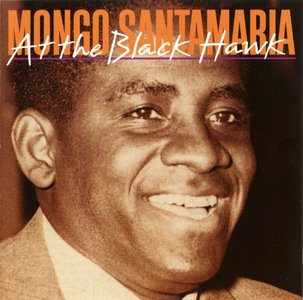| Su | Mo | Tu | We | Th | Fr | Sa |
|---|---|---|---|---|---|---|
| 25 | 26 | 27 | 28 | 29 | 30 | 1 |
| 2 | 3 | 4 | 5 | 6 | 7 | 8 |
| 9 | 10 | 11 | 12 | 13 | 14 | 15 |
| 16 | 17 | 18 | 19 | 20 | 21 | 22 |
| 23 | 24 | 25 | 26 | 27 | 28 | 29 |
| 30 | 31 | 1 | 2 | 3 | 4 | 5 |
Attention❗ To save your time, in order to download anything on this site, you must be registered 👉 HERE. If you do not have a registration yet, it is better to do it right away. ✌

SpicyMags.xyz

SpicyMags.xyz
Carmen McRae - Fine and Mellow [2CD] (2005)
Date: 30 Oct 2011 23:31:00
Carmen McRae - Fine and Mellow [2CD] (2005)
Jazz | EAC Rip | FLAC (images)+CUE+LOG | mp3@320 | 628 MB. & 279 MB.
500dpi. Complete Scans (JPG) - 41 MB. | WinRar, 3% recovery
Audio CD (2005) | Label: Snapper/Recall | Catalog# SMDCD255 | 58:22 min. + 59:53 min.
Jazz | EAC Rip | FLAC (images)+CUE+LOG | mp3@320 | 628 MB. & 279 MB.
500dpi. Complete Scans (JPG) - 41 MB. | WinRar, 3% recovery
Audio CD (2005) | Label: Snapper/Recall | Catalog# SMDCD255 | 58:22 min. + 59:53 min.
Carmen McRae always had a nice voice (if not on the impossible level of an Ella Fitzgerald or Sarah Vaughan) but it was her behind-the-beat phrasing and ironic interpretations of lyrics that made her most memorable. She studied piano early on and had her first important job singing with Benny Carter's big band (1944), but it would be another decade before her career had really gained much momentum. McRae married and divorced Kenny Clarke in the '40s, worked with Count Basie (briefly) and Mercer Ellington (1946-1947), and became the intermission singer and pianist at several New York clubs. In 1954 she began to record as a leader' and by then she had absorbed the influences of Billie Holiday and bebop into her own style.
Mongo Santamaria - At The Black Hawk (1962) {Fantasy}
Date: 30 Oct 2011 23:26:46
Mongo Santamaria - At The Black Hawk (1962) {Fantasy}
EAC 0.99pb5 | FLAC tracks level 8 | Cue+Log+M3U+MD5 | Full Scans 300dpi | 473MB + 5% Recovery
Genre: Latin Jazz
EAC 0.99pb5 | FLAC tracks level 8 | Cue+Log+M3U+MD5 | Full Scans 300dpi | 473MB + 5% Recovery
Genre: Latin Jazz
Applying their famous two-fer philosophy to the digital era, Fantasy combines Mighty Mongo and Viva Mongo! on a single CD, showcasing two somewhat different slants on Mongo Santamaria's music during a period of exploration. Mighty Mongo leans more to Mongo's jazz side without sacrificing his Afro-Cuban rhythmic base, while Viva Mongo has a more distinctly ethnic Cuban sound with Rudy Calzado's solo vocals and the band's group chanting, Rolando Lozano's wooden flute riding playfully above the ensemble, and the traditional Cuban use of string counterlines. On Mighty Mongo, "Descarga at the Black Hawk" sets an especially tasty groove, with some timbales/congas/cymbals action on an extended vamp.
Gitbox 1.5
Date: 30 Oct 2011 23:23:40
Gitbox 1.5 | Mac Os X | 5.9 MB
Gitbox now has a new intuitive interface that makes everyday tasks amazingly simple. In a single window you see all your repositories, history and working directory state. Commit, pull and push with a single click. Creating, sharing and comparing branches becomes so simple, you will start to actually use them.
Once Upon a Time S01E02
Date: 30 Oct 2011 23:19:58
Once Upon a Time S01E02
HDTV | AVI | 624x352 | XviD @ 1,145 Kbps 23.976 fps | MP3 @ 160 Kbps | 42m 41s | 350 Mb
HDTV 720p | MKV | 1280x720 | x264 @ 3,170 Kbps 23.976 fps | AC3 @ 384 Kbps | 42m 41s | 968 Mb
Genre: Drama, Fantasy | Language: English
HDTV | AVI | 624x352 | XviD @ 1,145 Kbps 23.976 fps | MP3 @ 160 Kbps | 42m 41s | 350 Mb
HDTV 720p | MKV | 1280x720 | x264 @ 3,170 Kbps 23.976 fps | AC3 @ 384 Kbps | 42m 41s | 968 Mb
Genre: Drama, Fantasy | Language: English
Once Upon A Time is, at its core, a story about hope. "For us, that’s what a fairytale is. It’s that ability to think your life will get better. It’s why you buy a lottery ticket—because if you win you get to tell your boss that you’re quitting and you get to move to Paris or wherever and be who you always wanted to be. And that’s Cinderella, right? One day she’s sweeping up and the next she’s going to the ball. Adam and I just wanted to write about something hopeful that for one hour a week allows one to put everything aside and have that feeling that your dreams just may come true." - Edward Kitsis, Co-Creator/Executive Producer.
Glyphs 1.1.4
Date: 30 Oct 2011 23:16:51
Glyphs 1.1.4 | Mac Os X | 8.2 MB
The font editor for everyone. Glyphs' smart and simple approach helps you draw new typefaces, modify existing fonts, and sculpt your letterforms hassle-free.
Gustavo Rosas, Gisela Natoli - Tango - Curso Basico de Colgadas y Volcadas
Date: 30 Oct 2011 23:09:22
Gustavo Rosas, Gisela Natoli - Tango - Curso Basico de Colgadas y Volcadas (2008)
DVDRip | AVI / DivX 3091 Kbps | 640х480 | 29.97 fps | MP3 160 kbps | 1.37 GB
Language: Spanish | Sub: English | Run Time: 110 min
DVDRip | AVI / DivX 3091 Kbps | 640х480 | 29.97 fps | MP3 160 kbps | 1.37 GB
Language: Spanish | Sub: English | Run Time: 110 min
Soniccouture Synthi AKS KONTAKT EXS24 DVDR (repost)
Date: 30 Oct 2011 23:08:13
Soniccouture Synthi AKS KONTAKT EXS24 DVDR (repost) | 1.04 Gb
The E.M.S. Synthi AKS is a legendary instrument with an illustrious history. First manufactured in 1972 by E.M.S in Putney, South-West London, The Synthi A was basically a portable version of EMS's famous VCS3 synthesiser, and the KS Keyboard (a playable 30-note touchplate) was added to make the Synthi AKS. It cost 420lb. It was quickly adopted by the likes of Brian Eno and Pink Floyd, and has been used by experimental musicians ever since. The Synthi has a unique patching system that uses a small patchbay grid. Each of the Synthi's components appear as a source and destination on the patchbay, and by placing a pin into that x-y position, you can route the signal from one component to the other. This was a very effective way to make a powerful modular system very compact.
Беовульф. Старшая Эдда. Песнь о Нибелунгах
Date: 30 Oct 2011 22:58:31
Беовульф. Старшая Эдда. Песнь о Нибелунгах
1975 | Антология | Художественная литература | ISBN: No | руcский | PDF or DjVu | 786 pages | 51.8 Mb or 10.0 Mb
1975 | Антология | Художественная литература | ISBN: No | руcский | PDF or DjVu | 786 pages | 51.8 Mb or 10.0 Mb
Произведения героической поэзии, представленные в этом томе, относятся к средневековью - раннему (англосаксонский "Беовульф") и классическому (исландские песни "Старшей Эдды" и немецкая "Песнь о нибелунгах").
Duane Bang Ludwig - Full Force Fighting Secrets
Date: 30 Oct 2011 22:54:33
Duane Bang Ludwig - Full Force Fighting Secrets (2004)
DVDRip | AVI / XviD 1270 Kbps | 720х544 | 29.97 fps | MP3 128 kbps | 2.05 GB
Language: English | Run Time: 226 min
DVDRip | AVI / XviD 1270 Kbps | 720х544 | 29.97 fps | MP3 128 kbps | 2.05 GB
Language: English | Run Time: 226 min
Design and Implementation of Data Mining Tools (repost)
Date: 30 Oct 2011 22:48:46
Bhavani Thuraisingham, Latifur Khan, Mamoun Awad, Lei Wang, "Design and Implementation of Data Mining Tools"
A..rbach P..cations | 2009 | ISBN: 1420045903 | 272 pages | PDF | 10,8 MB
A..rbach P..cations | 2009 | ISBN: 1420045903 | 272 pages | PDF | 10,8 MB
Grieg: Peer Gynt "Radio Symphony Orchestra / Philharmonia Slavonica" (1995)
Date: 30 Oct 2011 22:48:00
Grieg: Peer Gynt "Radio Symphony Orchestra / Philharmonia Slavonica" (1995)
Classical | EAC Rip | FLAC (tracks)+CUE+LOG | mp3@320 | 227 MB. & 146 MB.
500dpi. Complete Scans (JPG) - 19 MB. | WinRar, 3% recovery
Audio CD (1995) | Label: Elap Music | Catalog# 44003CD | 62:15 min.
Classical | EAC Rip | FLAC (tracks)+CUE+LOG | mp3@320 | 227 MB. & 146 MB.
500dpi. Complete Scans (JPG) - 19 MB. | WinRar, 3% recovery
Audio CD (1995) | Label: Elap Music | Catalog# 44003CD | 62:15 min.
Peer Gynt, Op. 23 is the incidental music to Henrik Ibsen's 1867 play of the same name, written by the Norwegian composer Edvard Grieg in 1875. It premiered along with the play on 24 February 1876 in Christiania (now Oslo). Later, in 1888 and 1891, Grieg extracted eight movements to make two four-movement suites: Suite No. 1, Op. 46, and Suite No. 2, Op. 55. Some of these movements have received coverage in popular culture.
L'empire de la valeur : Refonder l'économie
Date: 30 Oct 2011 22:42:59
André Orléan, "L'empire de la valeur : Refonder l'économie"
Publisher: Seuil | ISBN 10: 2021054373 | 2011 | PDF | 340 pages | 5.7 MB
Publisher: Seuil | ISBN 10: 2021054373 | 2011 | PDF | 340 pages | 5.7 MB


![Carmen McRae - Fine and Mellow [2CD] (2005)](https://pixhost.icu/avaxhome/11/63/001e6311_medium.jpeg)












